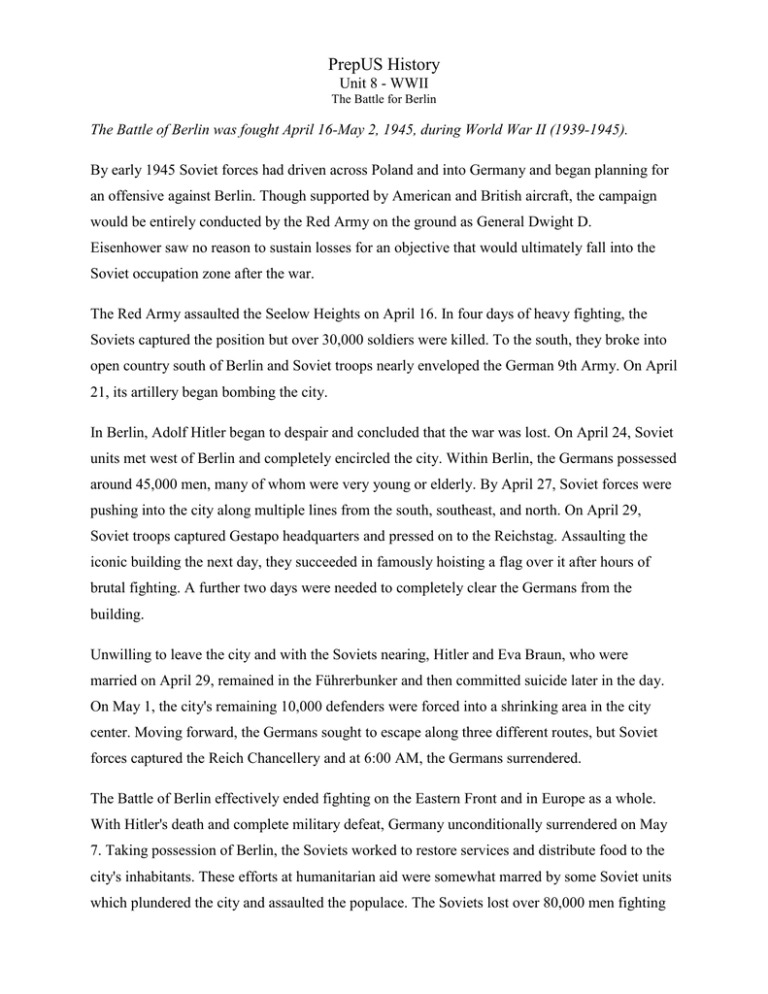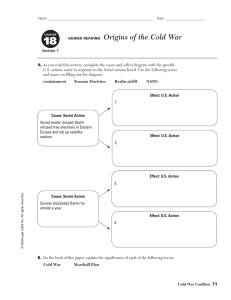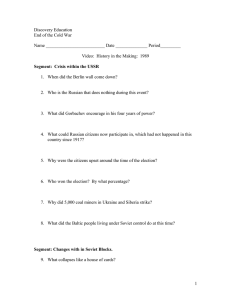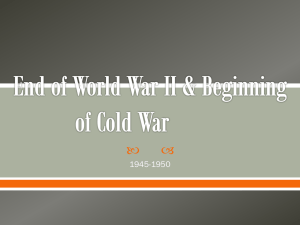PrepUS History
advertisement

PrepUS History Unit 8 - WWII The Battle for Berlin The Battle of Berlin was fought April 16-May 2, 1945, during World War II (1939-1945). By early 1945 Soviet forces had driven across Poland and into Germany and began planning for an offensive against Berlin. Though supported by American and British aircraft, the campaign would be entirely conducted by the Red Army on the ground as General Dwight D. Eisenhower saw no reason to sustain losses for an objective that would ultimately fall into the Soviet occupation zone after the war. The Red Army assaulted the Seelow Heights on April 16. In four days of heavy fighting, the Soviets captured the position but over 30,000 soldiers were killed. To the south, they broke into open country south of Berlin and Soviet troops nearly enveloped the German 9th Army. On April 21, its artillery began bombing the city. In Berlin, Adolf Hitler began to despair and concluded that the war was lost. On April 24, Soviet units met west of Berlin and completely encircled the city. Within Berlin, the Germans possessed around 45,000 men, many of whom were very young or elderly. By April 27, Soviet forces were pushing into the city along multiple lines from the south, southeast, and north. On April 29, Soviet troops captured Gestapo headquarters and pressed on to the Reichstag. Assaulting the iconic building the next day, they succeeded in famously hoisting a flag over it after hours of brutal fighting. A further two days were needed to completely clear the Germans from the building. Unwilling to leave the city and with the Soviets nearing, Hitler and Eva Braun, who were married on April 29, remained in the Führerbunker and then committed suicide later in the day. On May 1, the city's remaining 10,000 defenders were forced into a shrinking area in the city center. Moving forward, the Germans sought to escape along three different routes, but Soviet forces captured the Reich Chancellery and at 6:00 AM, the Germans surrendered. The Battle of Berlin effectively ended fighting on the Eastern Front and in Europe as a whole. With Hitler's death and complete military defeat, Germany unconditionally surrendered on May 7. Taking possession of Berlin, the Soviets worked to restore services and distribute food to the city's inhabitants. These efforts at humanitarian aid were somewhat marred by some Soviet units which plundered the city and assaulted the populace. The Soviets lost over 80,000 men fighting to take Berlin. German casualties are a matter of debate with early Soviet estimates being as high as 458,080 killed and 479,298 captured. Civilian losses may have been as high as 125,000. The next day - May 8, 1945 - was proclaimed V-E Day, for “Victory in Europe.” Soviets raising the flag in Berlin. 2 Soviet tanks advance through Berlin. A German soldier lies dead in the street as Soviet troops rush forward during the battle to gain control of Berlin. 3






